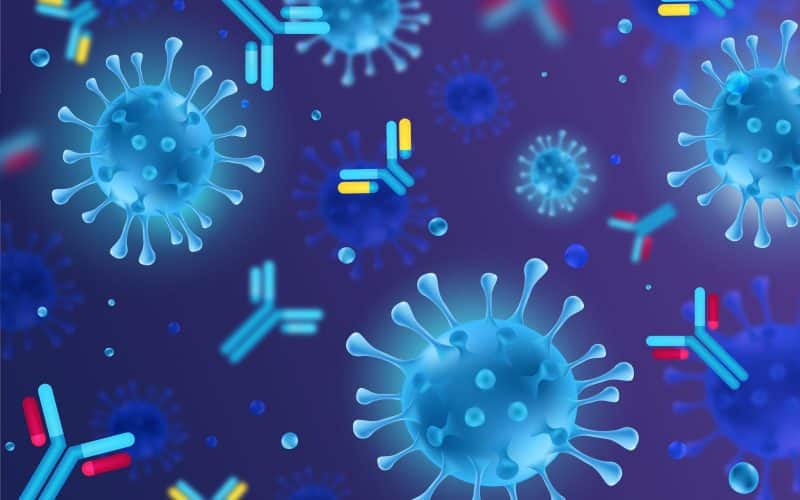PFAS (per and polyfluoroalkyl substances) are a cluster of man-made chemicals used for their grease-and-water-resistant properties. Found in products like water-repellant fabrics, non-stick cookware, and firefighting foams, this chemical can affect both humans and the environment. Their durability makes them work for multiple applications. However, their adverse health effects and environmental persistence have raised ample concerns.
The Environmental Working Group developed an interactive map for PFAS contamination that gets updated frequently. According to the update of May 21, 2024, 6,189 locations in Columbia and four territories are contaminated. People residing in this area might have been affected by AFFF exposure.
Therefore, it is necessary to understand the immunotoxicity risks linked with PFAS and safeguard public health. Immunotoxicity refers to the side effects these chemicals can have on your immune system. As a result, it can impair its ability to combat infections, making the body vulnerable to diseases. Also, it can lead to auto-immune conditions.
Awareness of these risks is necessary for developing sound strategies to minimize exposure and eliminate health hazards. To know more about this, keep reading this article.
Health Risks Linked to PFAS Immunotoxicity
The well-being of an individual depends on the balance of their immune system. Since the immune system comprises various cells with varied roles, exposure to toxic substances may disrupt its function in multiple ways. This disruption can lead to immunosuppression, inappropriate immune responses, or both.
The National Library of Medicine states that PFAS-related immunotoxicity results in a decrease in antibody production following vaccinations. This is especially true for children receiving diphtheria and tetanus vaccines.
Antibodies play a vital role in the adaptive immune system. They help to fight harmful substances and infectious agents. Additionally, animal studies reveal that PFAS exposure can reduce any antigen-related antibody responses. Also, there is an increased risk of gastrointestinal and respiratory infections in both human studies and animal experiments. This is true for children exposed in utero.
Although there is less evidence, PFAS exposure can also result in inadequate immune activation. Maybe it can deteriorate allergic reactions in the lungs and pre-existing asthma.
AFFF Exposure Can Affect the First Line of Defense of the Immune System
Firefighters, military personnel, and others who have been affected by firefighting foam can seek legal recourse by filing a PFAS lawsuit. The number of complaints related to PFAS exposure has been increasing recently, alleging Du Pont and 3M Company for their products. Additionally, studies highlighted that this foam weakens the immune system.
AboutLawsuits.com mentioned a recent study published in the ‘Journal of Immunotoxicology.’ The study noted that PFAS chemicals in AFFF can weaken the body’s capacity to signal white blood cells to fight invading organisms. The researchers studied how PFAS exposure affected zebrafish larvae and human cells.
Some toxic chemicals, such as the compound called Gen X, might suppress a vital immune response known as neutrophil respiratory burst. Being a type of white blood cell, neutrophils play a vital role in combating fatal pathogens. Hence, the neutrophil respiratory burst is the body’s primary defense against any kind of infection.
GenX chemicals were developed to substitute the dangerous PFAS compounds. However, the researchers found that it carried the most visible link to neutrophil respiratory burst suppression. This study was the first of its kind to explore the way PFAS chemicals restrict the respiratory burst.
Preventive Measures and Recommendations
It is necessary to ensure that your water supply is safe from PFAS contamination. Several states in the U.S. have reported PFAS in drinking water, so it’s crucial to check local water quality reports. If the water is contaminated, using a certified water filtration system can remove PFAS and significantly lower your exposure. Reverse osmosis systems and carbon filters can be effective at reducing PFAS levels in water.
Additionally, staying updated about PFAS-related risks and regulations is vital. Health authorities and environmental organizations like WHO and CDC frequently update guidelines on how to minimize exposure. Also, you can support the legislation.
Is There a Need for Legal Assistance?
The answer is yes. Drugwatch reported in July 2024 that BASF Corporation decided to pay $316.5 million to clean up drinking water sources containing PFAS. Additionally, in April 2024, Regina Brown complained that she suffered from kidney cancer after drinking PFAS-contaminated water.
Therefore, if you or your community has been affected by PFAS exposure, you should seek legal assistance. This will help you to navigate the potential claims for health damages and environmental cleanup.
TorHoerman Law states that there are expert lawyers who accept cases and represent you in court. It is necessary to collect vital evidence and consult a lawyer to start the legal process. They will evaluate your case details and determine whether you or your community is eligible for a lawsuit.
After that, they will guide you through the legal process. They will also let you know about the settlement payout, as it can vary based on the extent of the harm. When you seek legal assistance, you don’t get compensated; you also raise awareness regarding the dangers of PFAS exposure to health and nature.
FAQs
What are the three health risks of PFAS exposure?
Recent epidemiological research has established a link between exposure to PFOA and PFOS and various health effects. PFAS exposure can affect the immune system, leading to reduced vaccine efficacy in infants and children. Additionally, it can cause changes in liver function, including increased cholesterol levels and elevated liver enzymes. It can also lead to lower birth weight because of the toxic chemicals.
Who does PFAS exposure affect most?
The answer is undoubtedly children. This is because they are in a stage of ongoing development and are more vulnerable to the adverse effects of PFAS. They are also potentially exposed to higher levels compared to adults. It is because they consume more water, food, and air relative to their body weight, leading to increased PFAS exposure.
How does your body absorb PFAS?
PFAS are ubiquitous and long-lasting in the environment because of their strong carbon-fluorine bonds. This doesn’t allow them to break down completely in both the environment and the human body. In people, well-researched PFAS are primarily absorbed through the intestines and lungs. There is very limited absorption through the skin.
Hence, the immunotoxicity risks associated with PFAS include problems like weakened immune responses and increased susceptibility to infections. People should be aware of these risks to minimize exposure and advocate for stronger regulations. If you believe you have been affected by PFAS contamination, seek legal recourse by consulting a lawyer.






